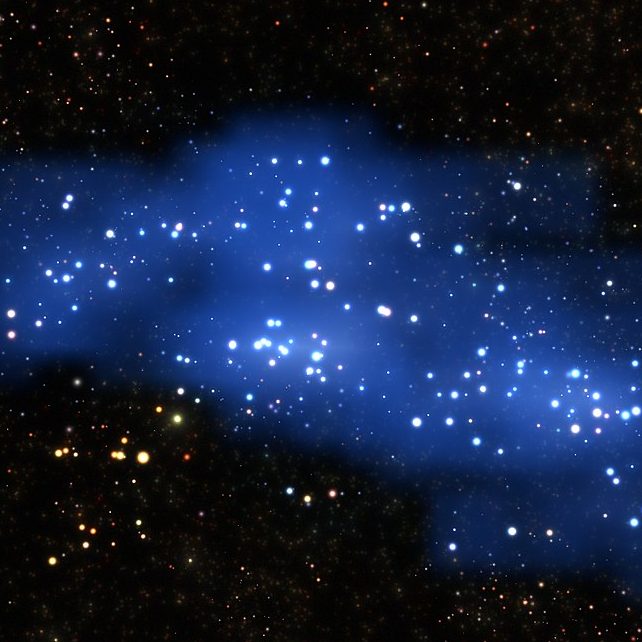
Image Credit: ESO
Astronomers have recently discovered a large cluster of galaxies now known as the supercluster Hyperion. Hyperion is thought to have formed only 2 billion years after the big bang, making this the largest structure of galaxies ever observed in the early universe.
Hyperion was discovered by a team of international scientists who were surprised to see something so large and so evolved from when the universe was still so young.
“When you are studying galaxies something that is 2 billion years old is very young,” Lowell Astronomer Deidre Hunter explains. “It’s only 1/14th the age of the universe. If you think of it as the life of a human it would only be 10 or 15 years old.”
Which leaves you wondering how do clusters and superclusters like Hyperion form?
“An individual galaxy you see is a bunch of gas and stars rotating around the center,” Hunter states. “Then you are just looking for concentrations. When you have enough galaxies together you get a cluster. When you see a cluster of clusters that’s what we call a supercluster.”
For a galaxy to be formed you need something to pull everything together. That something is gravity. Just like a school of small fish coming together to look like one big fish, gravity slowly pulls matter together to start forming galaxies.
As it turns out even our own Milky Way galaxy is part of a supercluster named Laniakea.
“I think this is one of the most amazing studies that has been done in recent years,” explains Hunter. “It’s mapping out our local supercluster and finding our place in it.”
Knowing that our own galaxy is part of a supercluster makes this discovery hit just a little closer to home.
“Astronomers are seeing one of these superclusters like us,” says Hunter. “just many billion years older.”
Scientists today are still baffled by the fact that something that was formed at such an early time in the universe could be so large. There are still so many things to discover about superclusters like Hyperion and the rest of the universe, but with scientists like the ones assigned to finding Hyperion we’re slowing making more headway to discovering everything we can about the sky above us.
If you would like to stay connected to all things astronomy sign up for our Astro Alerts and receive breaking news stories from the world of astronomy. You won’t miss a thing again.